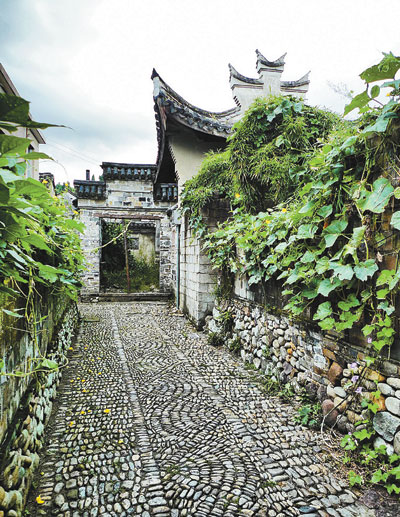
THERE are many small ancient towns and villages in China where the lifestyle has barely changed over the centuries. At these places, you can learn how Chinese people lived in the old days, and also learn about China’s ethnic minorities. Here are some of the recommended places. Qiantong Zhejiang Province Located in Ninghai County, Qiantong is one of many ancient unspoilt towns in East China. With a history of 760 years, many of the houses were built in the Ming (1368-1644) and Qing (1644-1911) dynasties. For this reason, it is one of the best places in the area to learn about Chinese architecture. More than 2,000 families live in the town and, being relaxed and hospitable, some of them may well invite you for tea, chat and local home cooking. If you go to Qiantong, you must go to Lushan Hill. Just located outside the ancient town, the hill is only about 39 meters above sea level. However, there are few experiences comparable to standing on the peak and overlooking the whole town. The town is also known for its distinct local tofu. There are several types of tofu that are hard to find in other areas of China. Transport: Fly to Ningbo from Shenzhen airport and take a train to Ninghai. Go by bus to Qiantong from Ninghai. Xiaozhou Village  Guangdong Province Xiaozhou Village in Guangzhou may be the most relaxed village in Guangdong Province. The village, built along a river, is particularly popular with artists and photographers. Chinese painting masters Guan Shanyue and Li Hongcai both came to the village for inspiration. Because of its good reputation in art circles, it has become the subject of much art. Many young artists move to the village, painting, opening exhibitions and selling their works. They often walk, chat, jog, cook and shop in the village during the day and work on their art at night. There are also many stores selling interesting and special products at low prices, such as T-shirts, stationery, accessories and ornaments. Many of these products were designed and made by artists in the village. There are also many traditional Cantonese snacks in the village, such as sesame soup, double-layer milk and Cantonese desserts. Transport: Take a train to Guangzhou from Shenzhen Railway Station and take a bus to Xiaozhou Village.  Yunshuiyao Fujian Province Located in Fujian Province, Yunshuiyao is an ancient town mostly populated by the Hakka people known for having many tulous. The tulou is a type of Chinese rural dwelling associated with the Hakka people in the mountainous areas in southeastern Fujian. They were mostly built between the 12th and 20th centuries. There are 53 well-preserved tulous in Yunshuiyao and some were even built during the Yuan Dynasty (1279-1368). The tulous have different styles according to which period they were built in, making the town the perfect place to learn about Hakka architecture. Unlike many famous ancient towns which are overcrowded with tourists, Yunshuiyao is a quiet and relaxing place where you can walk around the villages or along the river and never be disturbed. Food and inns in Yunshuiyao are very cheap. Local chicken, duck, fish and Hakka cuisine are must-tries when visiting the town. Tea is also recommended. Transport: Take a train to Zhangzhou, Fujian Province, from Shenzhen Railway Station and take a coach to Yunshuiyao. You can also take a flight to Xiamen, Fujian Province, from Shenzhen airport and get to Yunshuiyao by coach. (Wang Yuanyuan) | 
